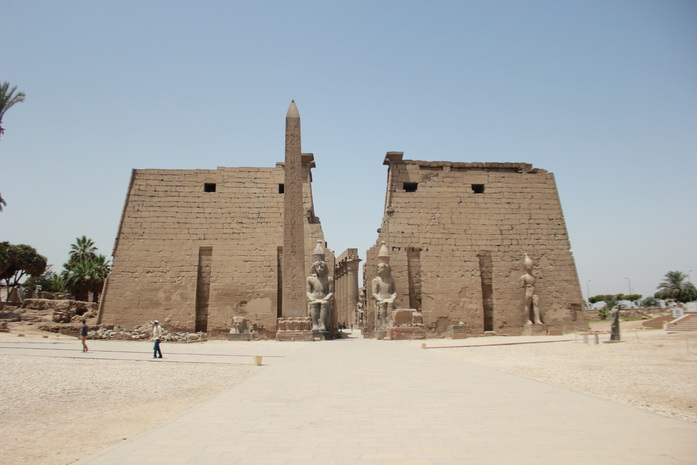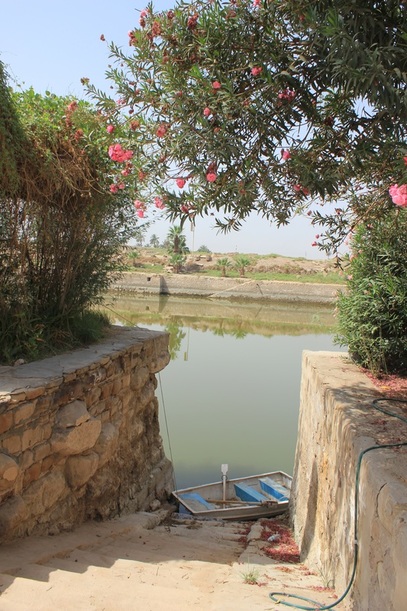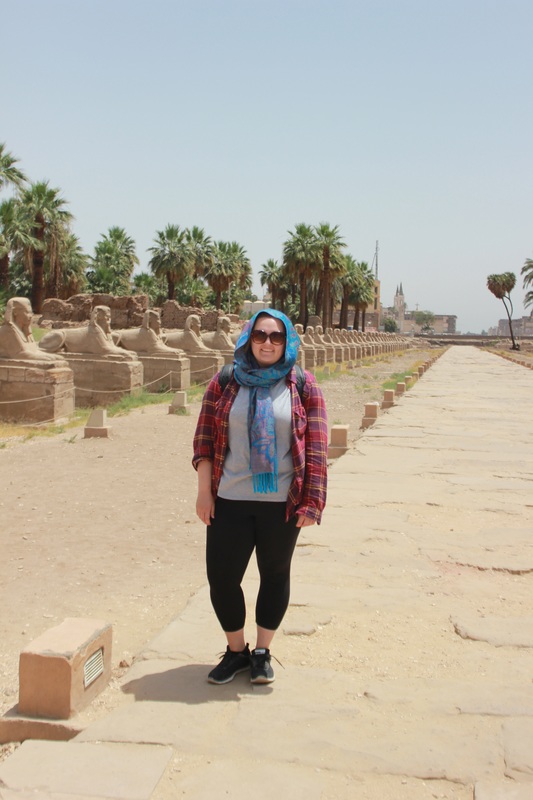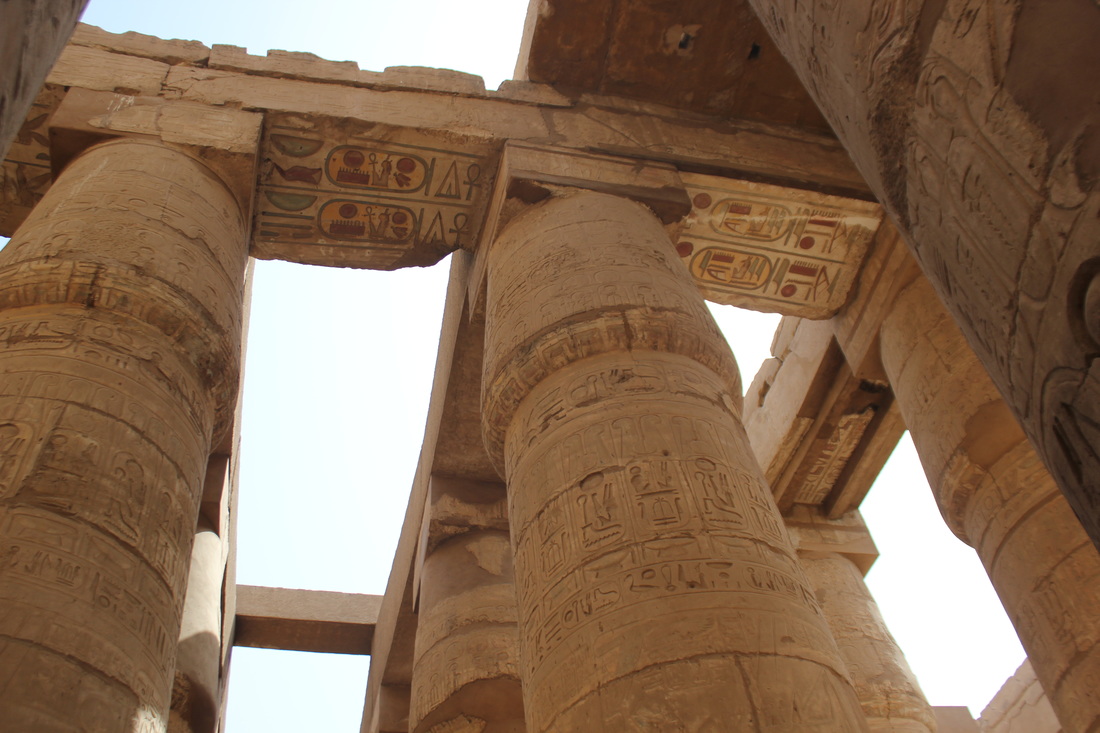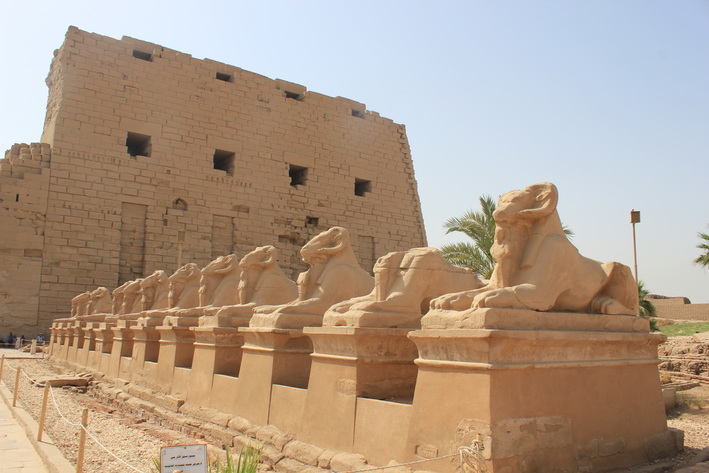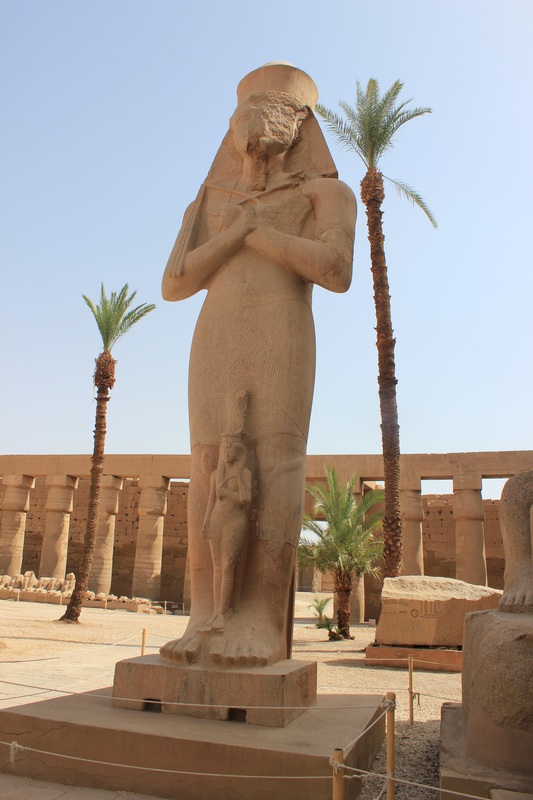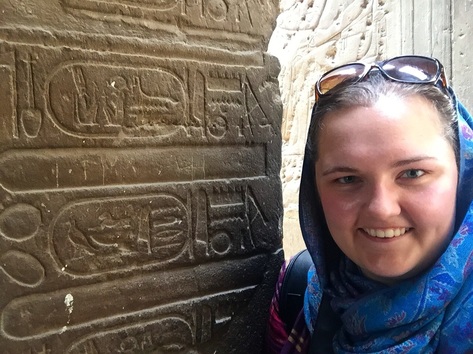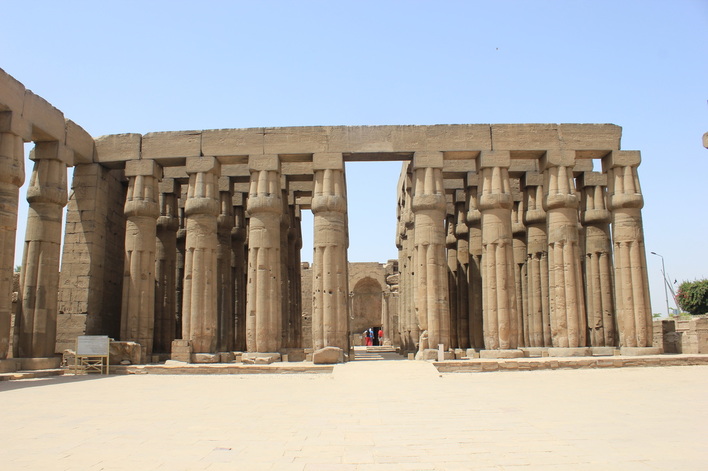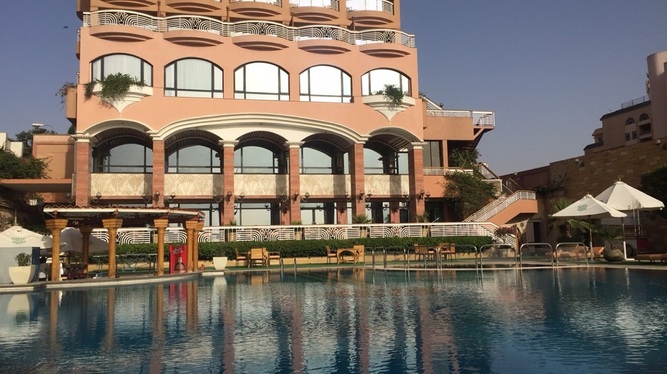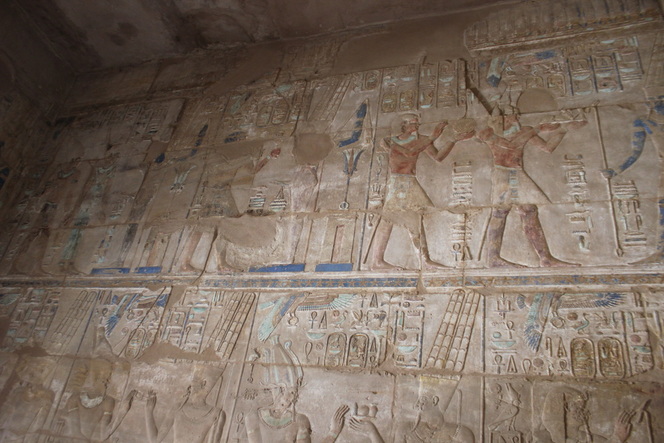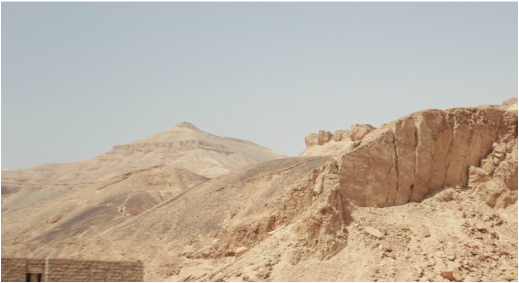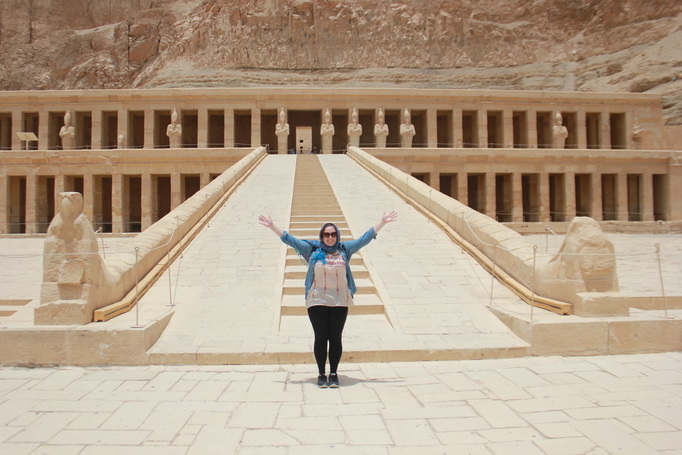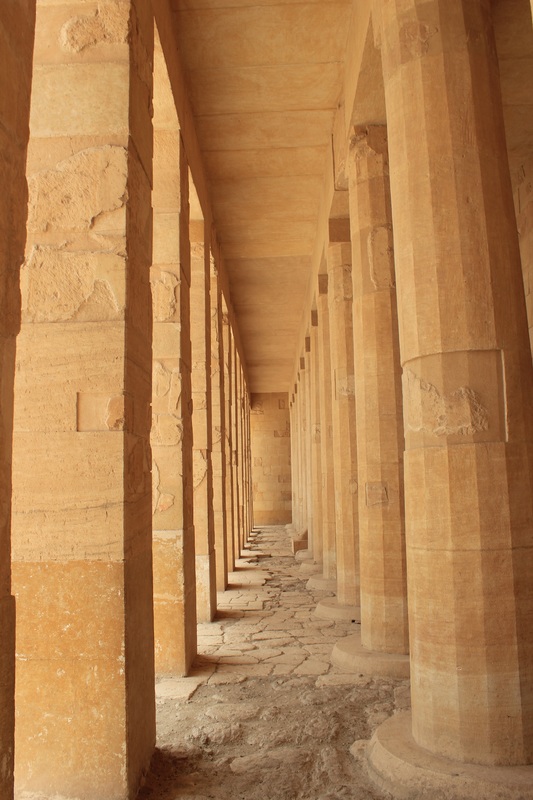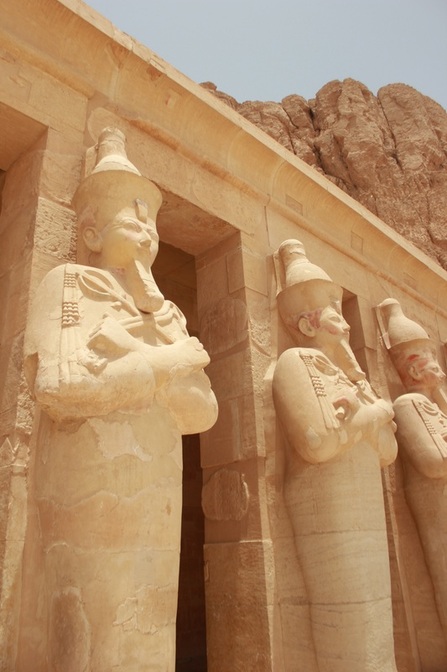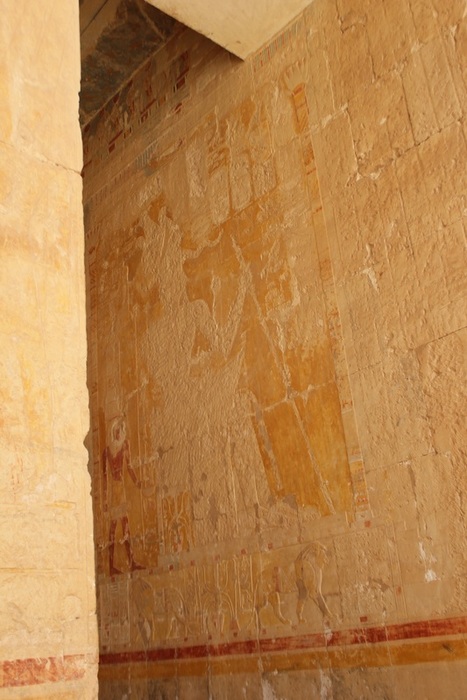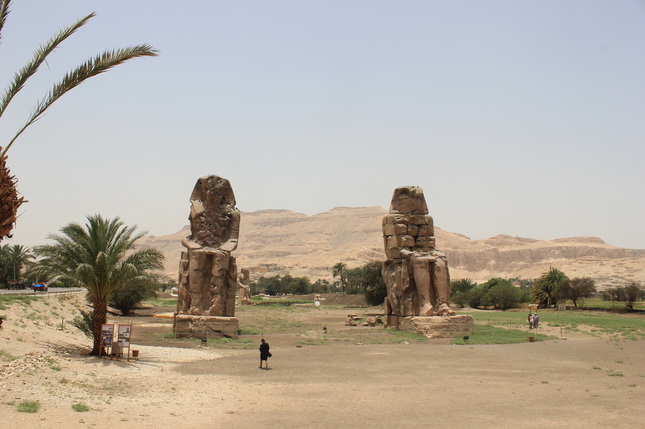|
I went to Egypt with the expectation of never being able to return. Arriving in Luxor Luxor was the single most incredible place I’ve ever been. Normally, when I travel I dread the question: “Where was your favorite place.” Well, after going to Egypt, Luxor in particular, I can now answer that question without hesitation. The combination of the Temple of Luxor and Karnack Temple nearly brought tears to my eyes as I walked among ruins that I’ve spent two decades watching documentaries and reading books about. We arrived in Luxor very early in the morning. For some reason, I had made the incorrect assumption that we would be able to visit our hotel before we visited the temples of the East Bank. However, considering the temperature later in the day and the fact that you can’t even check into a hotel until 11 AM at the earliest, we did not go to the hotel first. This means that I arrived in Luxor in my glasses, without sunscreen and generally ill prepared for the day. However, because I packed so well, I was able to slap some sunscreen on and put my contacts in before we ventured to Karnack Temple. Side note for travelers: I highly recommend always carrying soap sheets (not just hand sanitizer) and tissues. This goes for travel in general, but especially in Egypt I was thankful to always have both items because the bathrooms often did not. Living the Dream, Literally Karnack was glorious. I can’t even begin to describe to you the feelings I had while being surrounded by the columns topped with open and closed papyrus flowers representing the cities and villages of Egypt at the time. This temple is also the sight of one of my favorite movies: Murder on the Nile, by Agatha Christie, (an author I hero worship). Many parts of the sight are closed restoration. However, the ‘guards,’ local men, will gladly open doors and show you secret pathways just prior to asking you for a tip. I have a hard time deciding between this being a sad thing and it being kind of awesome. Maybe a bit of both? Walking away from Karnack was difficult. I felt as if I was leaving a piece of my heart behind. But I would soon be leaving another piece of it behind as we visited Luxor Temple. Discovering Ancient Egypt At Luxor Temple we learned a great deal about Ramses II. As we learned, and could clearly see within the temple, Ramses really liked commissioning statues of himself. Connected to a lot of the statues were smaller statues of his beloved wife, Nefertari. We also discovered something incredible deeper into the ruins: the cartouche of Alexander the Great! Living in Macedonia, I’ve learned so much more about Alexander III than I would have living in any other part of Greece. I’ve visited his birthplace, the tomb of his father and son, and while in Egypt I discovered a temple he built for the Egyptian gods in an effort to respect their heritage and culture. This discovery was completely unexpected and one of the coolest parts of the trip, especially after spending the last four months surrounded by the legacy of Alexander. #sorrynotsorry Our afternoon was spent poolside in the hotel. I had almost as much fun snapchatting my friends, both in Greece and in America, pictures of the pool as I did swimming in the pool. Valley of the Kings Luxor day two was my favorite day of the entire trip. Our guide took us to the Valley of the Kings and I nearly wasn’t able to bring myself to leave. We visited three tombs while in the Valley of the Kings. Each was incredible in different ways and by the third I had absorbed enough knowledge that I was excited to notice that it was unfinished. The deepest room did not contain carvings, only paintings. Again, I’m a giant nerd so this was exciting to have noticed on my own and have confirmed by our guide. You might notice that this section of my post will be decidedly lacking in photos. That is because you’re not allowed to take pictures within the valley. The above picture was taken at Karnak Temple in a room that is currently under renovation and not open to the public... Hence the locals demanding tips. But imagine even more incredible wall carvings and brilliantly preserved colors and that was the inside of the tombs. Surprised Mom? While driving into the valley, a long and winding road, I began asking questions. I first asked if there are other limestone valleys in Egypt such as the one we were driving into. The answer was yes, which lead me to question two: Why this valley? Why, out of all of the valleys in Egypt, did the ancient Egyptian kings choose this one? Our guide smiled and told me that he’d explain once we were in the valley. Sure enough, twenty minutes later, under the scorching sun (I’ve actually never been as hot as I was in that valley) he explained why the tombs of the most powerful men in Egypt were placed just outside of Luxor. History Lesson Ancient Egyptian history is made up of three parts: Old Kingdom, Middle Kingdom and New Kingdom. The pyramids are an example of Old Kingdom tombs. Giant, grandiose structures built to protect the valuables of the pharaohs from grave robbers. Well, it didn’t work very well. So by the New Kingdom, the pharaohs were looking for a new way to protect their possessions and bodies in preparation for the afterlife. This lead to the first pharaoh buried in the Valley of the Kings all the way to Luxor where he presumable was wandering around through valley after valley until he looked up and was like, “A-ha!” (Totally a true story). Fast forward thousands of years and our guide told me to look up. Above us, high up in the valley, is a limestone formation of a pyramid. The Valley of the Kings is located where it because the pharaohs of the New Kingdom wanted to better protect their tombs, but they also wanted a pyramid to mark the spot because, lets face it, pyramids are cool! In all of my studies, avid book reading and consumption of an unhealthy amount of documentaries about Egypt, I’d never heard about the Pyramid of the Valley of the Kings. It was incredible to learn about it while standing at the base mere feet away from the entrance of a tomb. Lights, Camera, Action! The next place we visited did allow pictures, and I took a bunch of them. In my Luxor photos I’m often wearing my headscarf, this had nothing to do with religion or culture and everything to do with the fact that the desert is freaking hot!Hatshepsut One of the figures we learned a lot about during our trip was Hatshepsut, the first female pharaoh. She was totally bad ass! After her husband’s death, she built bigger monuments, created better trade routes and built awesome temples including one of the few temples on the West Bank of the Nile. Ancient Egyptians believed that the East Bank was for life, temples and palaces, and the West Bank was for death, tombs. However, Hatshepsut’s Temple was a mortuary temple and therefore revolved around death hence the placement on the West Bank Warning: Major Nerdiness Ahead Hatshepsut was the most incredible woman of Ancient Egypt. When she came to power after her husband's death, she had difficulties with the people because she was a woman. To combat this ancient sexism, she ordered all statues of her to be carved in male figure. However, if you look closely at all of her statues, her face is still remarkable feminine. Sneaky artists, sneaky. Hatshepsut was responsible for creating a trade route to what is modern day Somalia. She traded cows for everything from gold to henna trees. The story of her success is still carved into the walls of her temple. However, tragically, few images of her remain at her temple. Once her stepson was old enough, he overthrew her, put her to death and tried to wipe her from the record of Ancient Egypt by having her images, temples and monuments destroyed. Fortunately, he wasn’t entirely successful. Advanced Civilization While at Luxor, our guide showed us his pride and joy: the perfume room. It was nearly perfectly preserved; the ceiling still almost entirely covered with the blue and yellow stared image of the night sky. It was one of the most beautiful things I've ever seen. Our guide informed us that much of his research consisted of sitting in that room from dawn until dusk translating the hieroglyphics written on the walls. He told us that much of the writing was recipes for perfumes! The Ancient Egyptians used oils and essences for more than smelling good. They also used aromatherapy to cure everything from headaches to stomach pains. It’s incredible to think about how advance civilization was in Ancient Egypt that they were able to use the plant life to create these remedies that still plague us today. Reality Check Traveling to Egypt was a well thought out, well-planned adventure of a lifetime. I’d worked with a travel agent to make sure that traveling companion and I would be as safe as possible. This included airport transfers, four and five star hotels with bomb sniffing dogs, and guides who rarely left our sides. I thought I’d thought of everything. But nothing could have prepared me for the reality of Egypt. Egypt was nothing like I’d ever experienced before. I’d stepped from my comfortable little world and into an entirely unfamiliar environment. It was as wonderful as it was shocking. Unlike some other top tourist destinations I’ve been too, cough Cancun cough, it’s impossible to hide the reality of daily Egyptian life from the tourists. The streets aren’t shinny and the views aren’t all the glossy images from post cards and National Geographic documentaries. The photos I posted on my social media pages and even so far in this blog post fail to illustrate the shear amount of poverty in Egypt, and I’m confident I didn’t see the worst of it. Run down buildings, broken roads, garbage on the streets and in the canals and layers of dust and grime covering everything. There is also vibrancy and passion and a strong sense of community. Egypt is not a destination I would recommend to first time travelers, nor it is a placed I would recommend you go on a whim. Do your research; reach out to people who have been before. All this being said, I loved Egypt and had a wonderful trip. However, I believe it is important to remain transparent about what I saw while I was in Egypt so as not to appear hypocritical when I post images of fancy hotel pools and selfies with the pyramids. Take Away Message The reality is Egypt’s number one cash crop is tourism. Ever since the revolution, there has been a decrease in tourism to Egypt, particularly from America. My mother was especially not enthused when she learned that I had bought my plane tickets and was flying to Cairo. I never do anything half heartedly or without careful preparation and research. Traveling the world is possible with enough forethought and planning and I’d be happy to help launch someone else’s dream of visiting Egypt. Be on the look out for my next post about my two week backpacking adventure across the UK and Italy! |
AuthorMy name is Hunter and this the blog of my worldwide adventures. The purpose of this blog is to show that you can be a traveler, not just a tourist. Archives
March 2019
Tags
All
|
Proudly powered by Weebly
